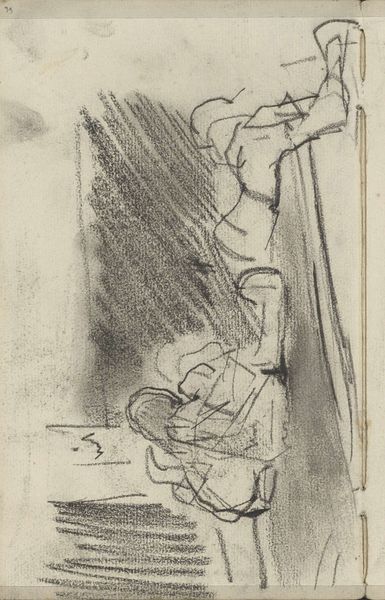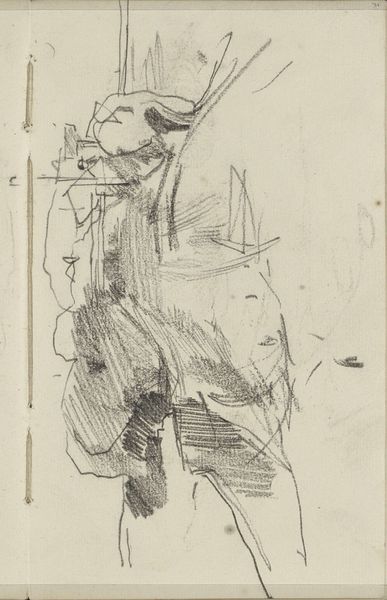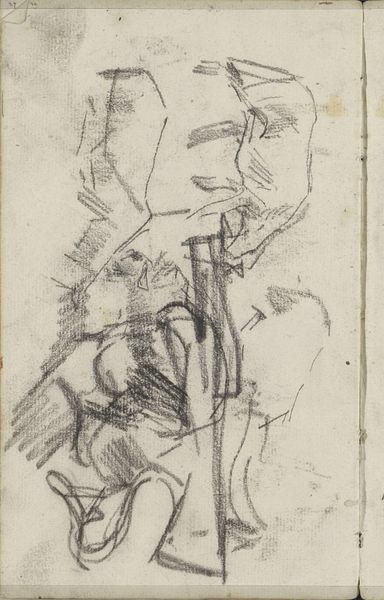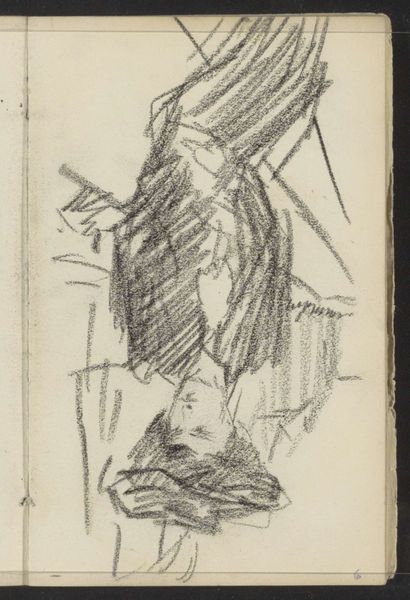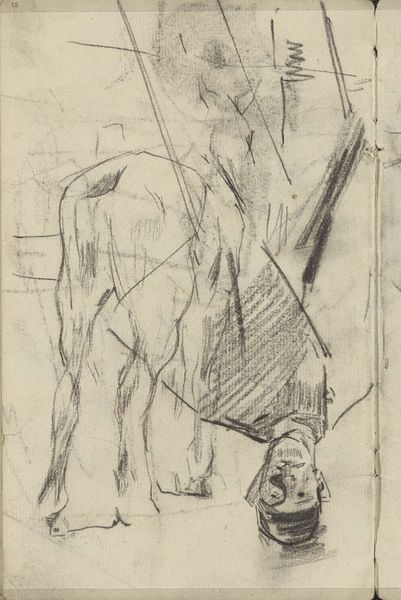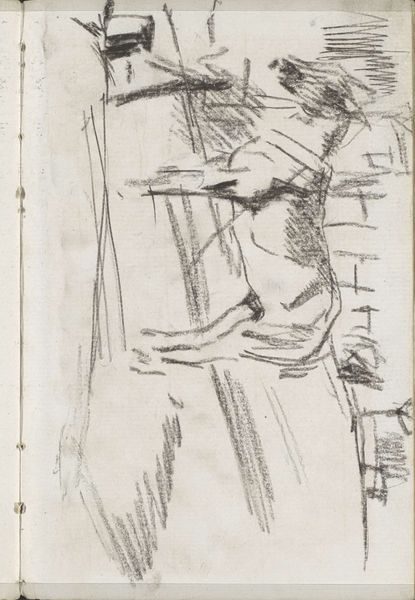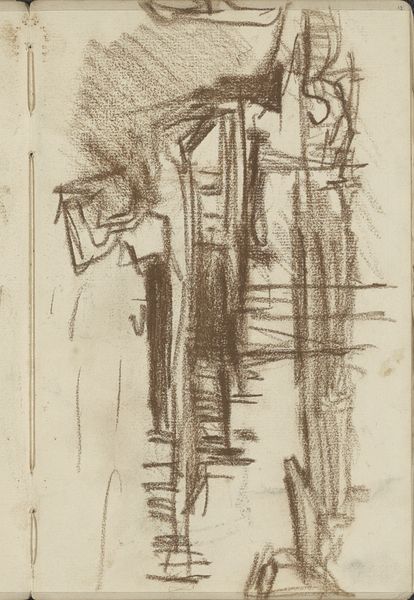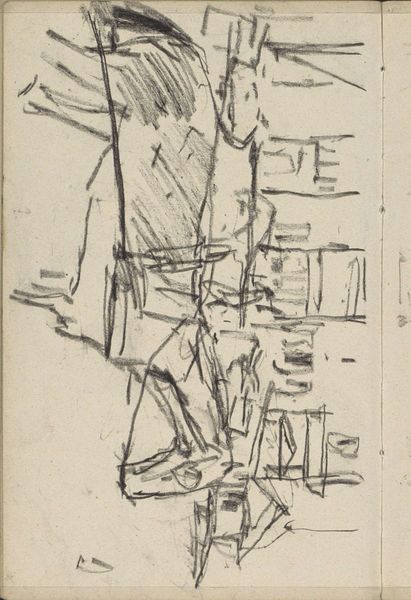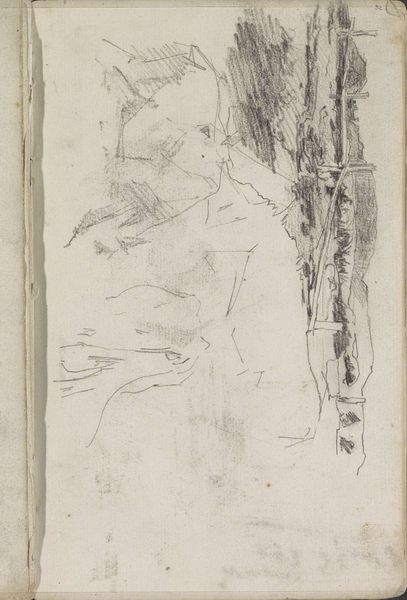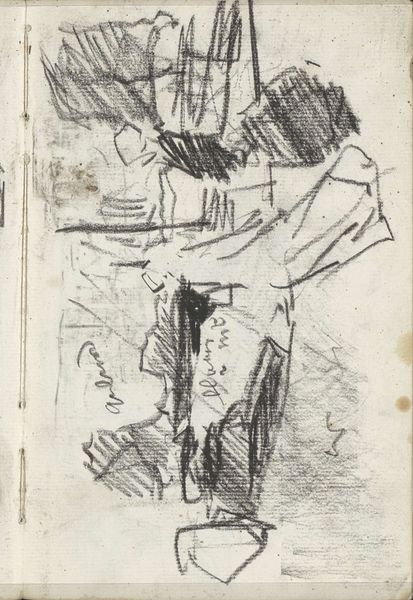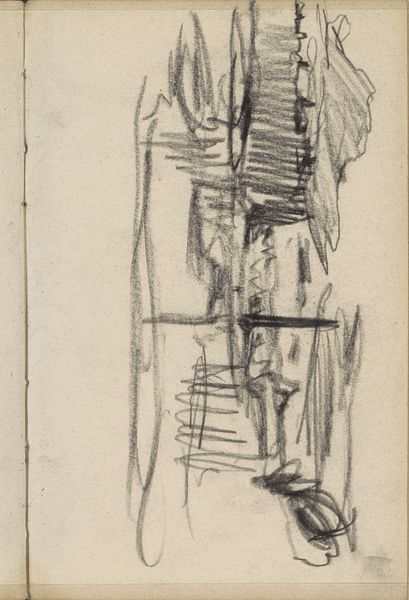
drawing, graphite
#
drawing
#
impressionism
#
pen sketch
#
landscape
#
figuration
#
horse
#
graphite
Copyright: Rijks Museum: Open Domain
Editor: This sketch, titled "Figuren bij drie aangespannen paarden," created by George Hendrik Breitner around 1883-1885, shows a quick graphite and pen study. I find the composition fascinating—it’s dynamic, but quite chaotic. What strikes you when you look at this drawing? Curator: It's interesting you use the word "chaotic". While it may appear so at first glance, consider how the lines function within the composition. The dense hatching creates depth and volume, focusing our attention, despite the limited tonal range. Note the contrast between the meticulously rendered upper figures and the much more gestural handling of the lower figures. This is not simply chaos; it’s a calculated exercise in artistic decision-making, with deliberate compositional choices that contribute to its overall structure and effect. Editor: That's true, the varying density and types of strokes does give it direction, though it seems almost incomplete, especially in the lower portions. Why do you think Breitner chose to leave parts of it so open? Curator: We might infer a deliberate highlighting strategy. Consider that by leaving those areas open, he forces the viewer to actively participate in constructing the image. These negative spaces aren’t voids but rather active components in our perception. Incompleteness here provokes thought, doesn't it? What does it tell us about the artist’s process, perhaps his intention to capture fleeting moments or impressions rather than a fully realised scene? Editor: That makes sense. Focusing on those negative spaces changes how I view the sketch. Thanks, I hadn’t considered how Breitner guided our eye by not completing certain areas. Curator: Precisely. And now, consider how that might apply to other drawings you see... a whole world of choices available to the artist.
Comments
No comments
Be the first to comment and join the conversation on the ultimate creative platform.
